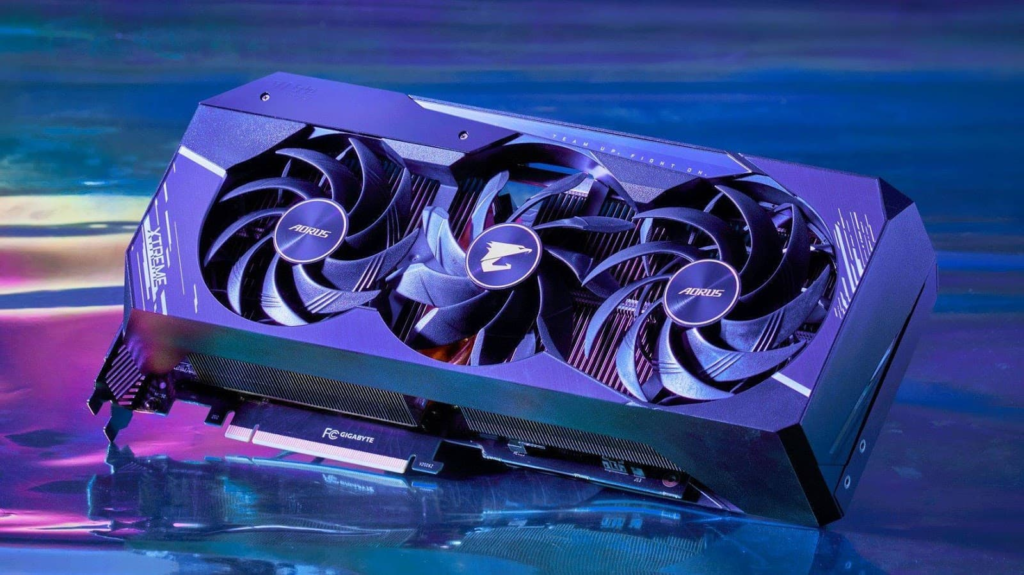
Aorus
In the world of gaming and digital graphics, the Graphics Processing Unit (GPU) stands as a pivotal component, driving visual performance and rendering capabilities. Whether you’re a seasoned gamer, a digital artist, or simply curious about technology, understanding GPUs is essential. This comprehensive guide delves into what GPUs are, how they work, their importance across different applications, and considerations for choosing the right GPU for your needs.
What is a GPU?
At its core, a GPU is a specialized electronic circuit designed to rapidly manipulate and alter memory to accelerate the creation of images in a frame buffer intended for output to a display device. Unlike the Central Processing Unit (CPU), which handles general-purpose tasks and calculations, GPUs are optimized for parallel processing and tasks related to rendering graphics and images. They excel at handling complex mathematical computations required for 2D and 3D graphics rendering, video encoding, and other visual tasks.
How GPUs Work
GPUs consist of thousands of smaller processing cores, each capable of performing multiple tasks simultaneously. This parallel architecture allows GPUs to handle large amounts of data and perform computations in parallel, making them highly efficient for graphics rendering and computational tasks in fields such as machine learning and scientific simulations.
Key components of a GPU include:
- CUDA Cores or Stream Processors: These are the fundamental processing units within a GPU that execute instructions and calculations.
- Memory (VRAM): Dedicated video memory (VRAM) stores data and textures used by the GPU for faster access and rendering.
- Graphics API Compatibility: GPUs are designed to work with graphics APIs (Application Programming Interfaces) like DirectX (Microsoft), OpenGL (Khronos Group), and Vulkan (also by Khronos Group), which provide a standardized way for software to communicate with the GPU.
Importance of GPUs in Gaming
In gaming, GPUs play a critical role in determining the visual quality and performance of games. The GPU renders images, textures, and effects in real-time, allowing gamers to experience smooth gameplay, realistic environments, and immersive visuals. Modern gaming GPUs like the NVIDIA GeForce RTX and AMD Radeon RX series are equipped with advanced features such as ray tracing, which simulates realistic lighting and shadows, and DLSS (Deep Learning Super Sampling), which enhances image quality using AI-driven upscaling.
Applications Beyond Gaming
Beyond gaming, GPUs are indispensable in various industries:
- Digital Content Creation: GPUs accelerate tasks in video editing, 3D modeling, animation, and rendering. Programs like Adobe Premiere Pro and Blender utilize GPU acceleration to improve workflow efficiency.
- Data Science and Machine Learning: GPUs excel in parallel processing tasks required for training and running machine learning models. Frameworks like TensorFlow and PyTorch leverage GPUs to accelerate neural network training.
- Scientific Computing: GPUs are used in scientific simulations, weather forecasting, molecular modeling, and computational fluid dynamics due to their ability to handle complex mathematical computations efficiently.
Choosing the Right GPU
Selecting the right GPU depends on your specific needs and budget considerations:
- Gaming Requirements: Determine the resolution (1080p, 1440p, 4K) and desired frame rates (60fps, 120fps, 240fps) for your gaming setup. High-resolution gaming requires a more powerful GPU with ample VRAM.
- Content Creation: If you’re into video editing or 3D rendering, a GPU with CUDA or OpenCL support can significantly speed up rendering times and improve workflow.
- Machine Learning and AI: Look for GPUs with dedicated Tensor Cores (NVIDIA) or compute units (AMD) optimized for deep learning tasks if you’re involved in machine learning projects.
- Budget Considerations: Balance performance needs with budget constraints. Entry-level GPUs like the NVIDIA GTX 1650 or AMD RX 5500 XT offer good performance for casual gaming and light content creation, while high-end GPUs like the NVIDIA RTX 3080 cater to enthusiasts and professionals requiring top-tier performance.
Future Trends and Innovations
The future of GPUs is promising with ongoing advancements in technology:
- Ray Tracing and Real-Time Rendering: Continued development of ray tracing technology promises more realistic lighting, reflections, and shadows in games and simulations.
- AI Integration: AI-driven features like DLSS and real-time denoising are expected to become more prevalent, enhancing visual fidelity and performance in games and applications.
- Energy Efficiency: Improvements in GPU architecture aim to deliver higher performance while maintaining energy efficiency, reducing power consumption and heat generation.
Conclusion
In conclusion, GPUs are foundational to modern computing, driving innovation in gaming, digital content creation, machine learning, and scientific research. Understanding GPUs empowers users to make informed decisions when choosing hardware for specific applications, ensuring optimal performance and efficiency. Whether you’re building a gaming rig, editing videos, training neural networks, or pushing the boundaries of scientific discovery, the GPU remains a cornerstone of computational power and visual prowess in today’s digital age.

